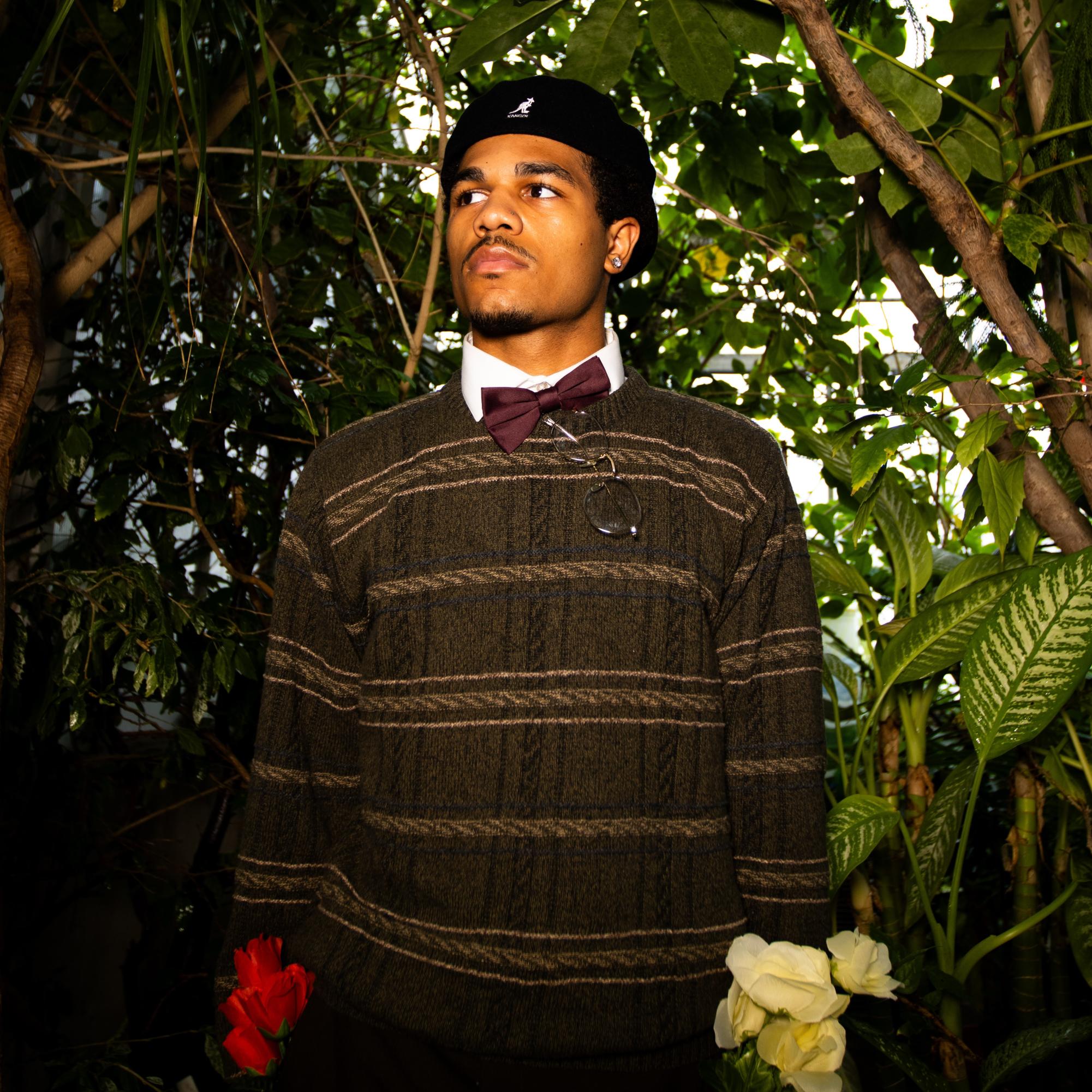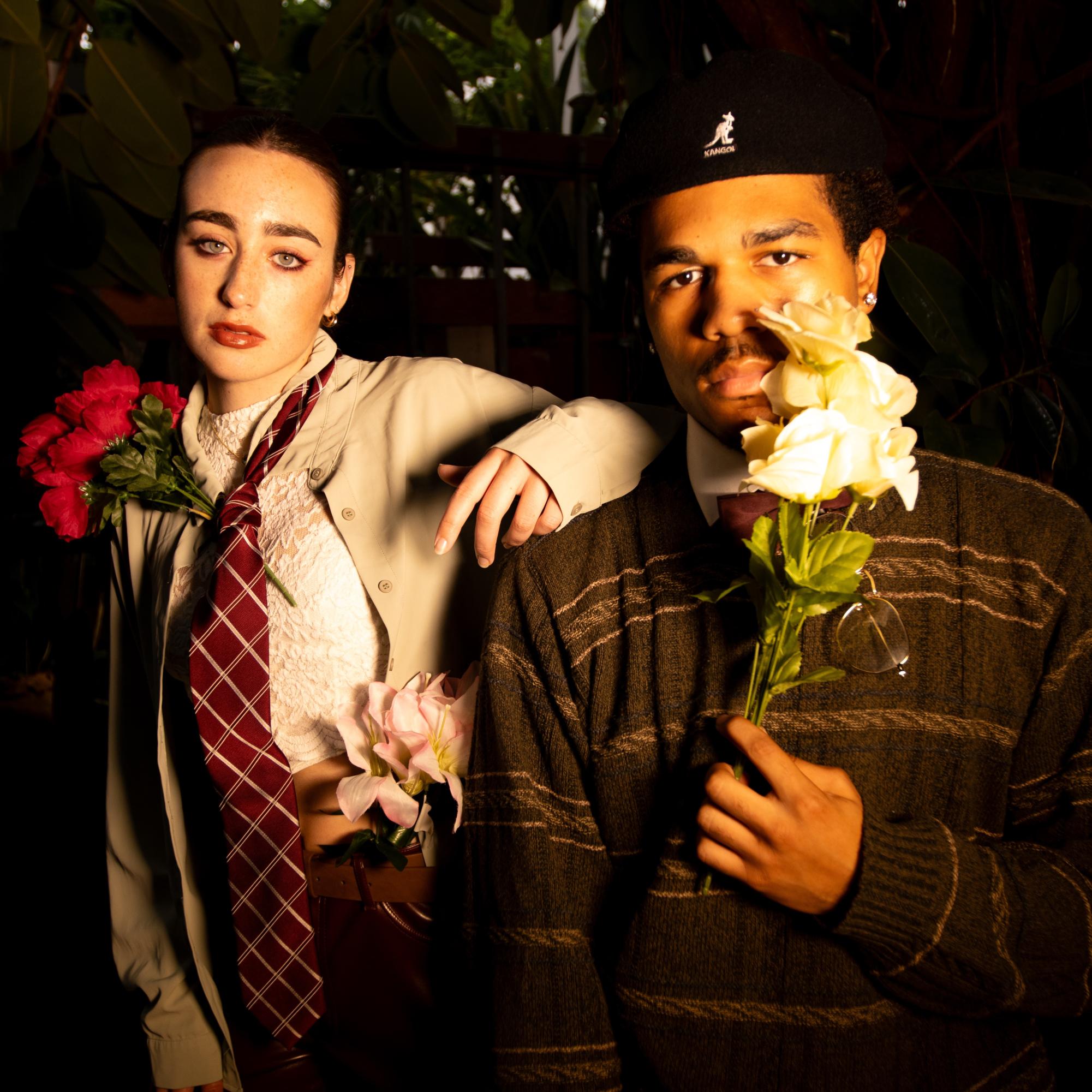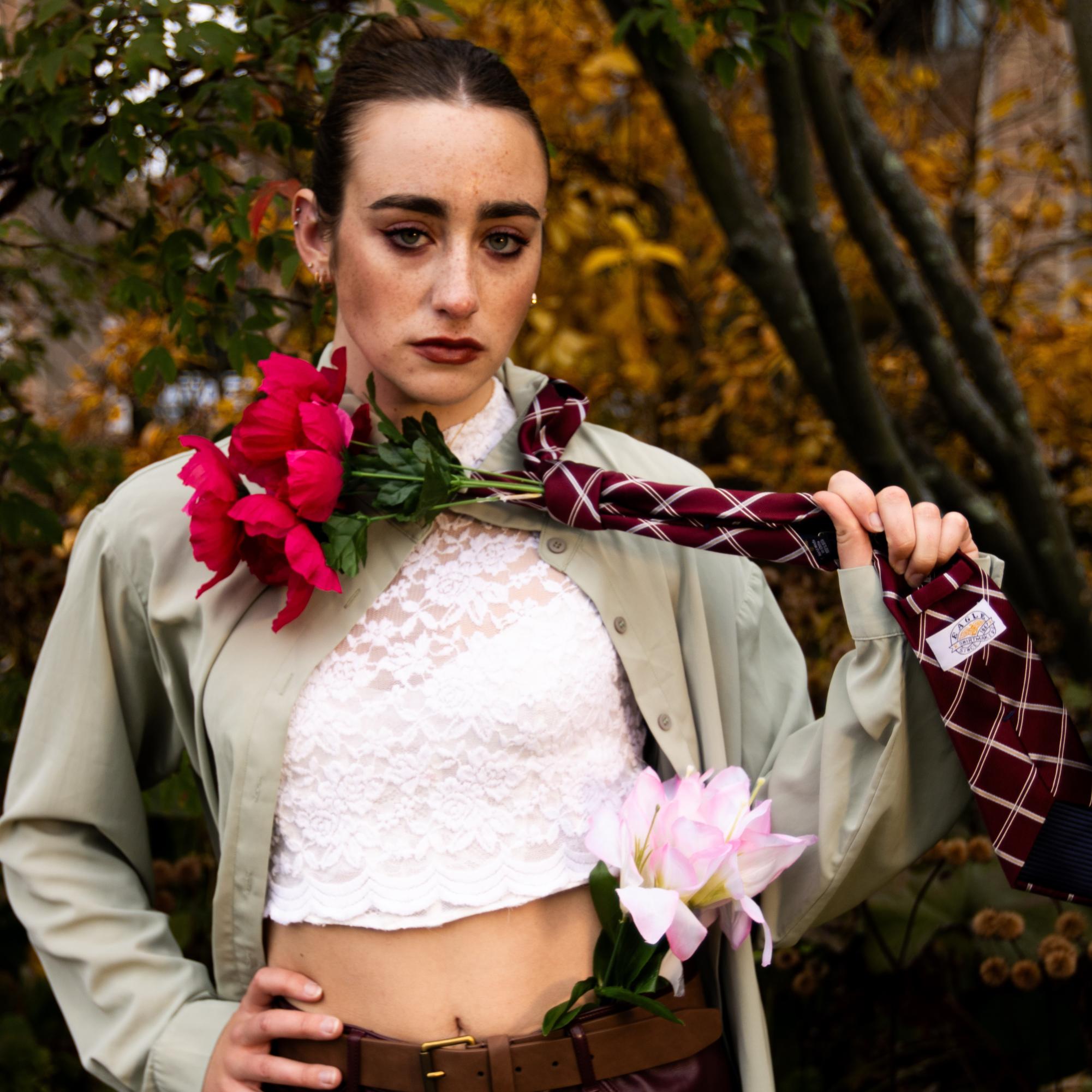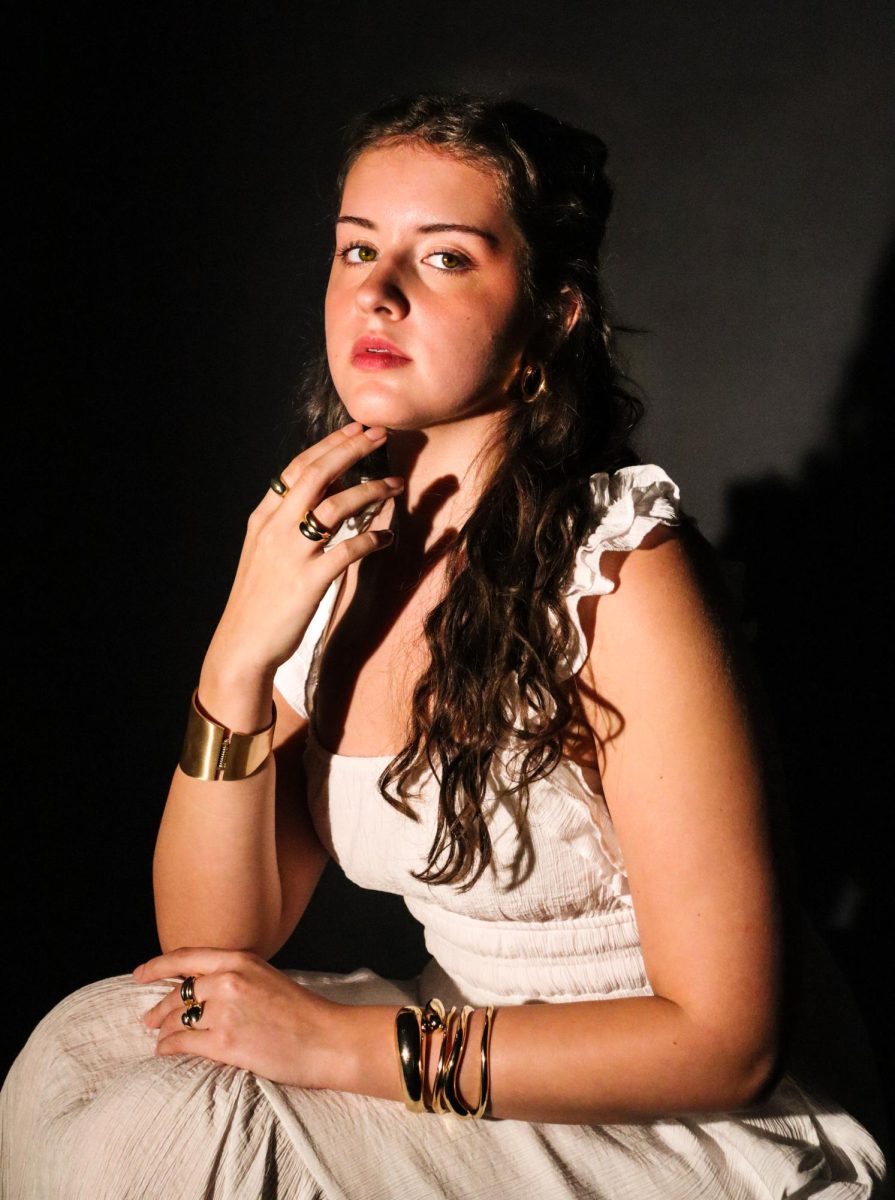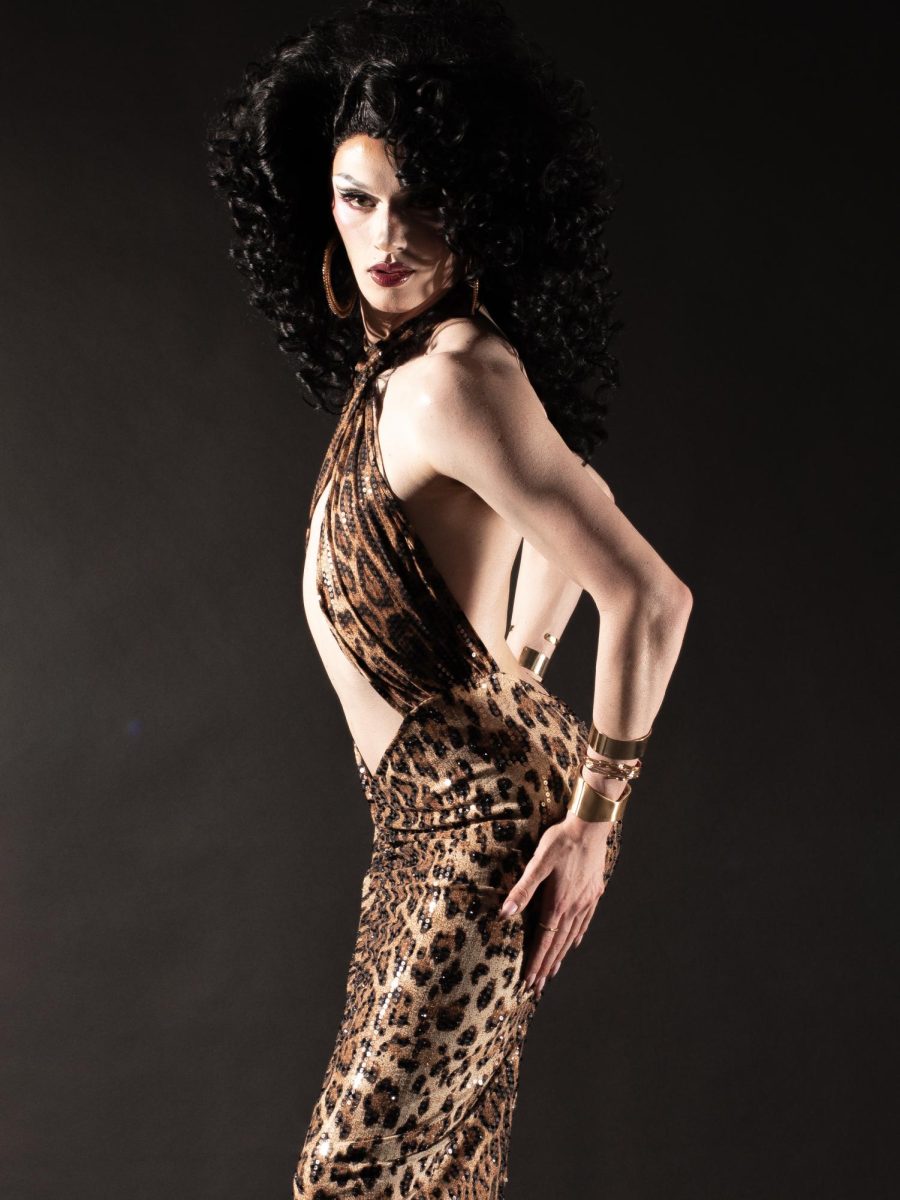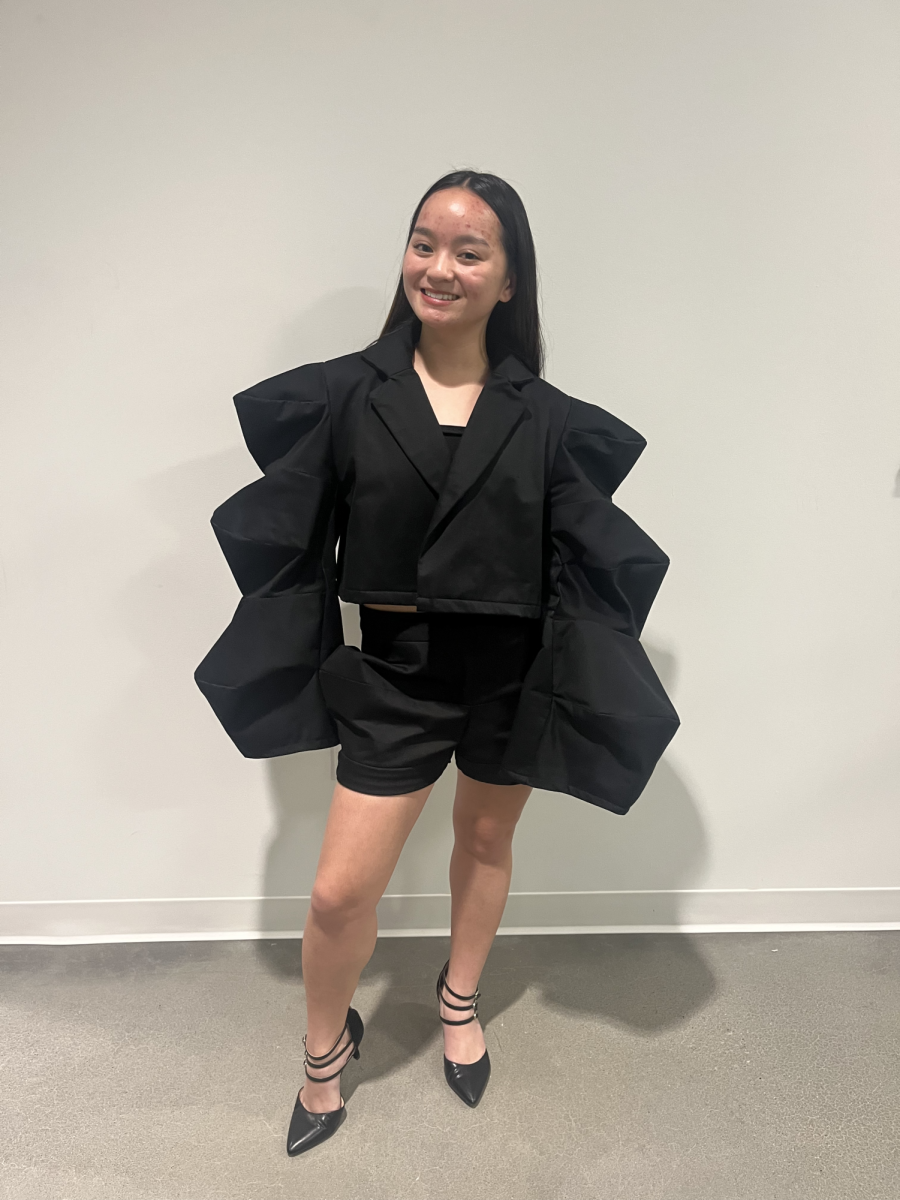
Models: Josiah Owens, Kate Stone
Styling: Emma Foos
Known for its renowned architecture and art history, the city of Florence is a place where creativity and culture are unified. While many famous luxury brands have originated in Italy, such as Prada, Dolce and Gabbana and Valentino, the emergence of Gucci has a particularly fascinating origin. Based in Florence, Gucci Gardens has made headway as one of the most notable and one-of-a-kind fashion exhibits in the world of design. Founded by Guccio Gucci in 1921, the company has grown from a single shop to becoming an influential symbol of creative style and luxury–setting a standard for how fashion, art and interactive experiences can become one.
Located inside the historic Palazzo della Mercanzia, this newly designed space was originally the Gucci Museum. Now, it has been transformed into an unparalleled multi-sensory and interactive tour through the history of the brand’s philosophies and design aesthetics that shape it to be unique. The Gucci Garden is an experience in which one’s perception of reality and imagination can be altered through Gucci’s iconic designs and desires. According to creative director Alessandro Michele, “The garden is real, but it belongs above all to the mind, populated with plants and animals: like the snake, which slips in everywhere, and in a sense, symbolizes a perpetual beginning and a perpetual return.” The name was ultimately chosen as a reference to the abundance of animals and plants represented, but it also stands as a metaphorical meaning for the brand’s imagination and “extraordinary collaborations” over the years.
The garden showcases a timeline of Gucci displays, from the start of the brand and its designs, all the way up to what they predict for the future of the company. Visitors are able to interact with elements of the Gucci exhibition spaces–celebrating its evolution and artistry.
Products designed exclusively for the gardens are located on the first floor in the marketplace, bearing the distinct aesthetic of the exhibit that is not able to be seen or bought anywhere else. Items sold include shoes, bags, exclusive silky bomber jackets and coats. Included on some of the garments is the famous Gucci Eye—a symbol representing the Gucci Garden, as it signifies one’s hypnotic stage and differences in perception.
The Gucci Gardens have a significant influence on luxury brands and fashion today. Their collaborations with contemporary designers and artists not only encourages other fashion brands to engage more with the cultural world around them but has also inspired creativity within the consumers themselves. Artists such as Isabella Cotier have designed many illustrations that have been implemented onto Gucci clothing and accessories sold in the garden. These illustrations are Florence-inspired, and captivate the culture and creative artistry of the city. Throughout the exhibit, people are encouraged to take the non-traditional routes of fashion and explore individuality.
While the influence of Gucci Gardens is significant in the city of Florence, some may ask: why should it matter worldwide? The Gucci Gardens are designed to emphasize detailed craftsmanship and artisanal techniques from all over the world. This preservation of techniques leads to a more thoughtful and direct approach to sustainability compared to fast fashion brands, and overall mass production indicated in the fashion industry.
The branding and influence of Gucci goes far beyond what is advertised on social media, and what is seen in their retail stores. When learning more about a brand and the history behind them, it can help create a more personal connection. Designer brands such as Gucci can help revive vintage aesthetics–pushing fashion forward.

